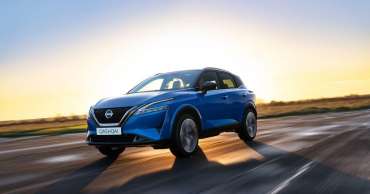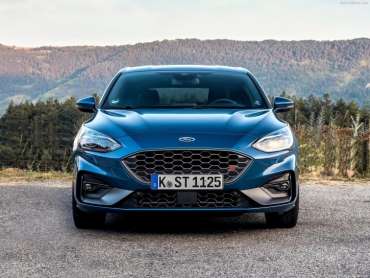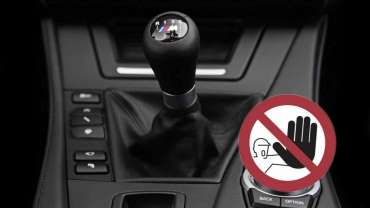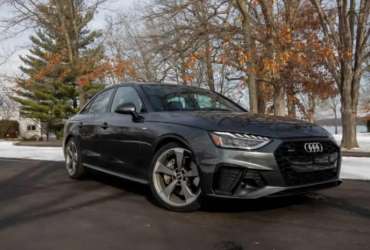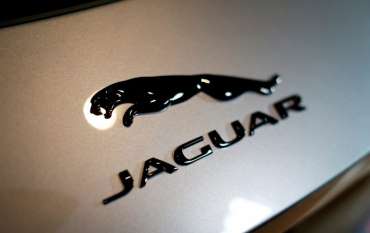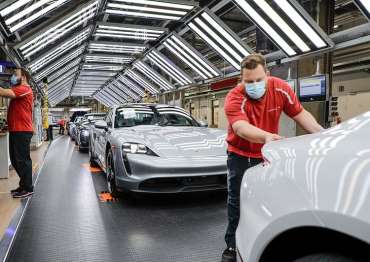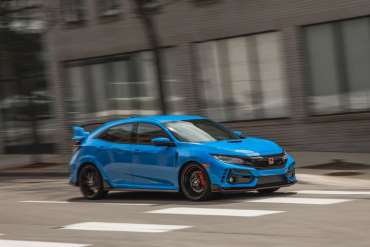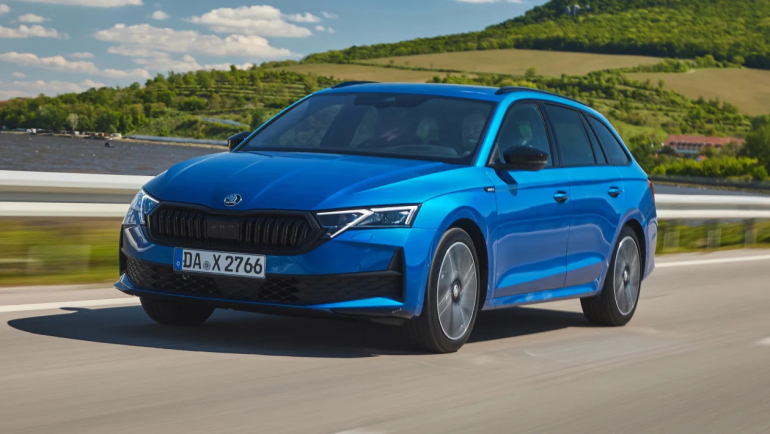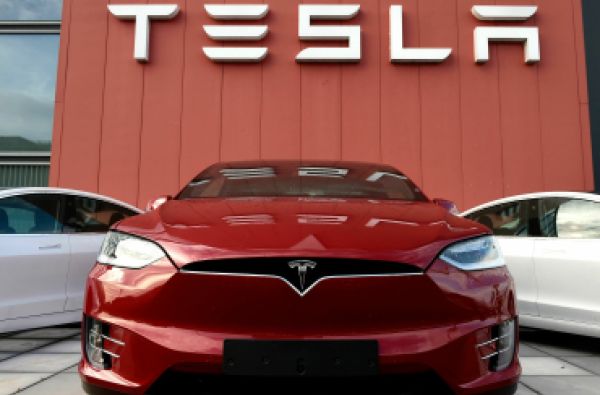
Worldcarblog.com
This is a brand new Nissan Qashqai! Now without a diesel he is shooting at the top of the class again
The third generation no longer has diesel engines, which as an alternative come with hybrid versions of the existing turbo gasoline
Three million copies sold in Europe and a total of five million worldwide. A nice number for both previous generations of Nissan Qashqai, a mega-popular SUV of the compact class, well accepted among Croatian buyers of this class. Great numbers and history, but which set a high bar of expectations from the newly introduced new model.
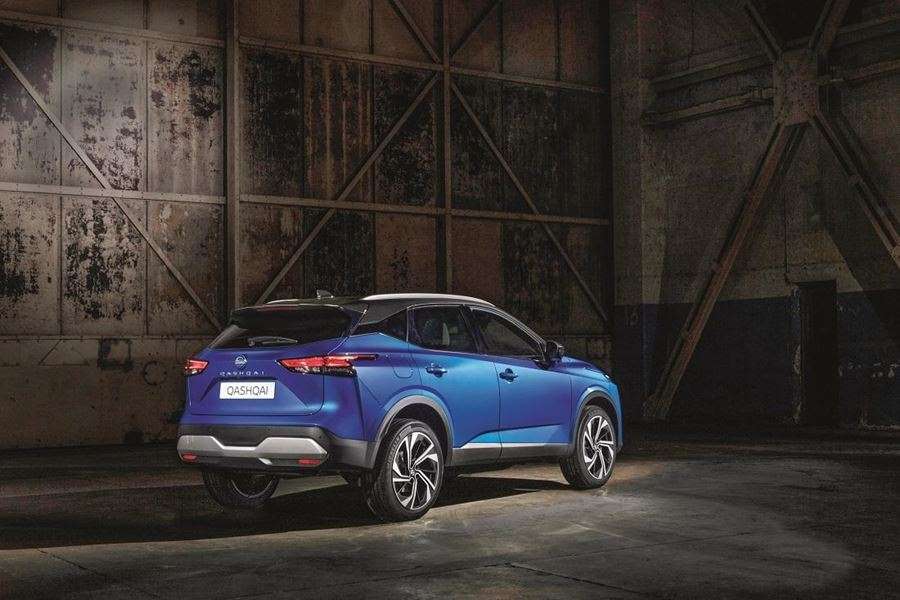
Nissan Qashqai, photo: Nissan
There is not much to say about design, the first step in appearing in front of customers. Qashqai retains the recognizable idea and lines of the previous model, but with cleaner lines, some details performed as a variation on the theme of Juke and Nissan's signature with a mask in the characteristic V-shape. A dose of modernism is given to it by details such as self-regulating, smart LED Matrix lights, 11 body colors, five two-tone combinations and rims that reach up to 20 inches as standard. The first photos create the impression of growing size and - that's right.
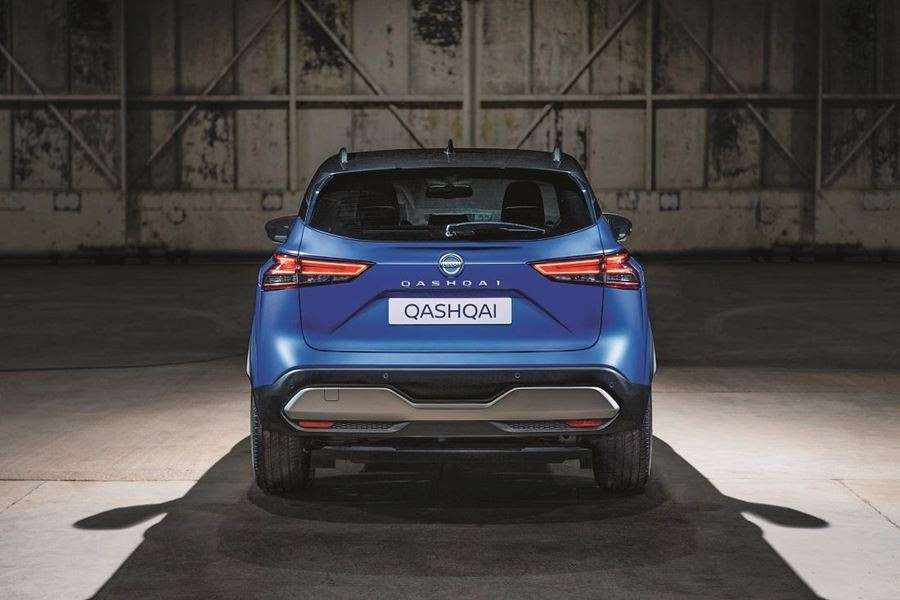
Nissan Qashqai, photo: Nissan
It is 3.5 centimeters larger (4,425 m), 3.2 centimeters wide (1,838 m), one centimeter high (1,635 m), and the larger corporate Renault-Nissan CMF-C platform, two centimeters larger axle, gives the impression of size. spacing (2666 mm). The result?
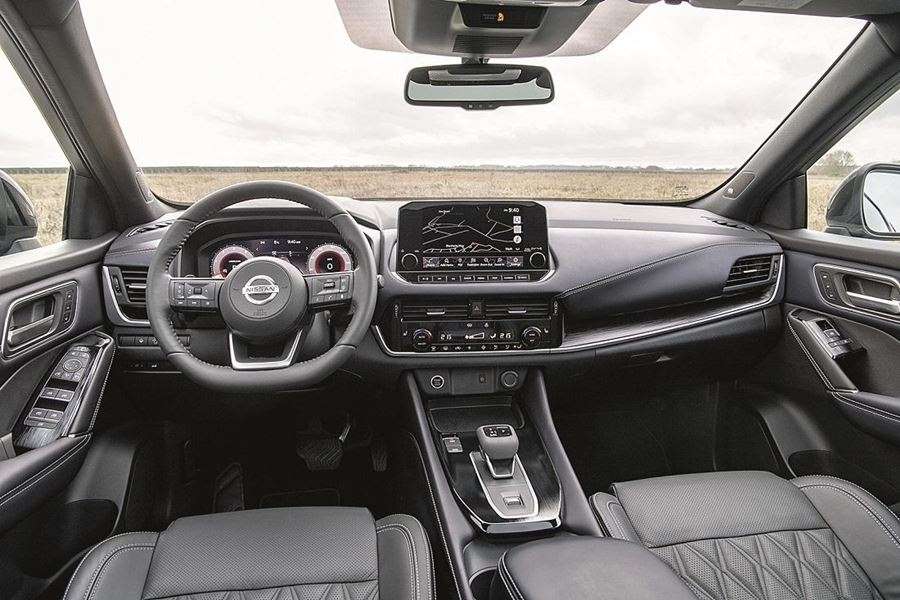
Nissan Qashqai, photo: Nissan
Round three centimeters more space for the passenger's knees in the rear seat (maximum 61 centimeters), a centimeter and a half more headroom and significantly more space in the front seats, where two-meter-tall people will also have a comfortable position. The rear pair of doors opens up to 85 degrees, which greatly facilitates access to the rear seat, and especially the placement of children in the seat.
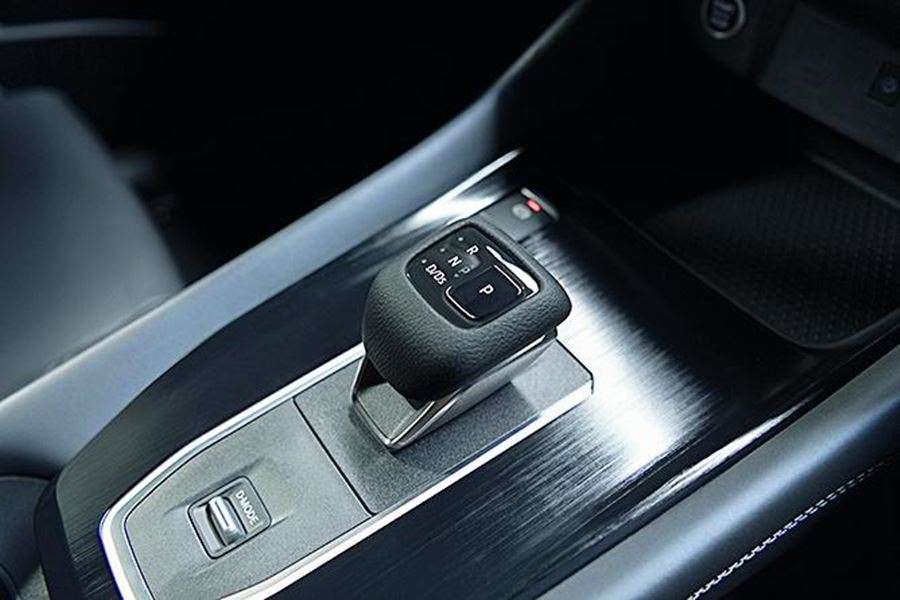
Nissan Qashqai, photo: Nissan
On top of all that, the trunk grows, by 50 liters, in this class more suitable 480 liters. It will be easier to access because the entry threshold is lowered by two inches. Aluminum alloys are also used more in the construction of the body, so let's say four side doors, fenders and a roof bring total savings of 21 kilograms. The fifth door is now made of composite materials and is 2.6 kilograms lighter, and the platform itself on the scales shows 60 kilograms less than the previous one. Niisan engineers swear that it is almost half as strong, or 41 percent.
The interior also boasts noticeably better materials, including nappa leather, a generally more expensive visual and sensory atmosphere, but also hedonistic elements of equipment such as massage seats or a concert Bose Premium hifi system with 10 speakers.
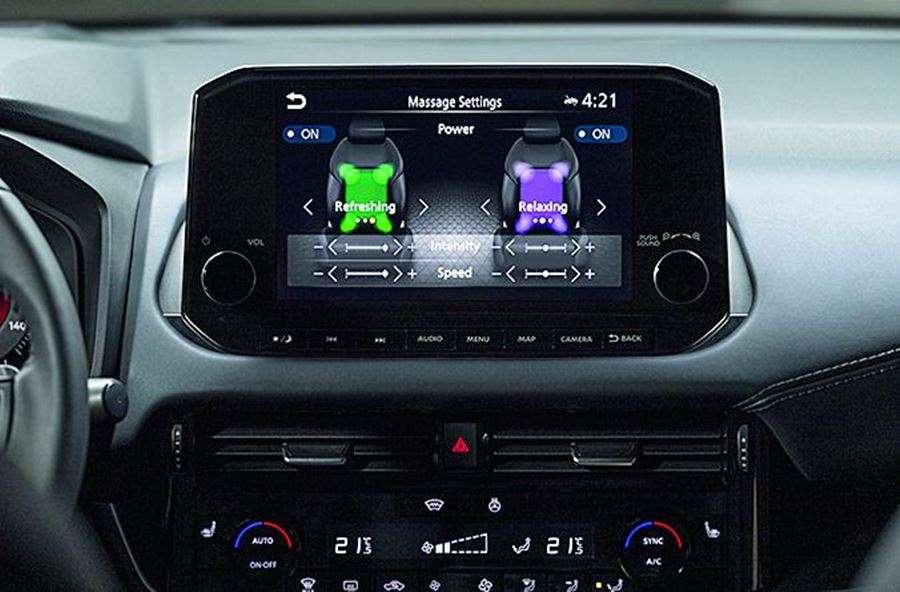
Nissan Qashqai, photo: Nissan
Digitization has also knocked hard on Qashqai’s doors. Large digitized 12.3-inch instruments, advanced multimedia with a 9-inch 3D screen, innovative and largest-in-class head-up 10.8-inch screen, interesting animations and wireless mobile charging are part of the new ambience accompanied by a smartphone app which will be able to control the secondary functions. Furthermore, the ProPilot safety system gets a connection to the navigation and detects real and potentially dangerous events in front of and around the car faster and more accurately. The system comes in versions with automatic transmission.
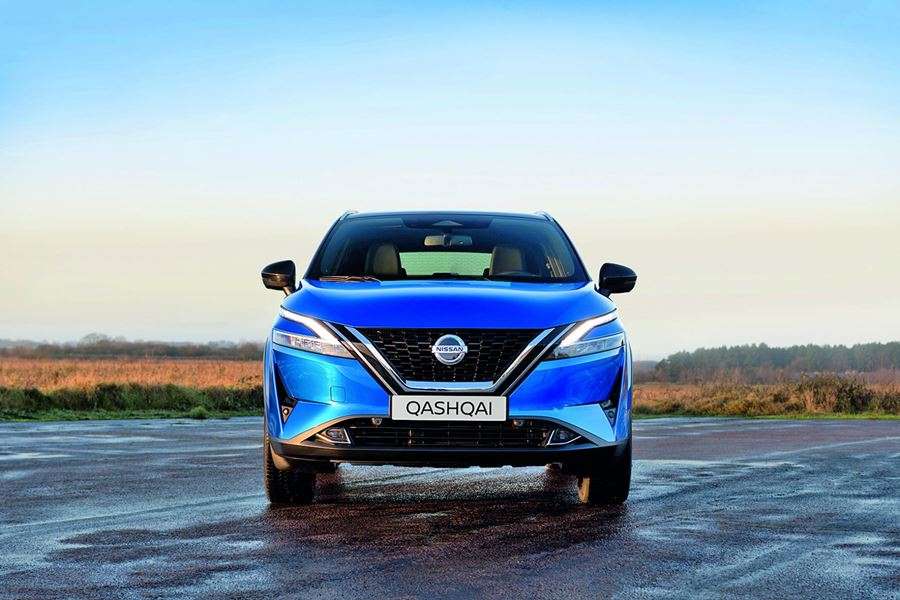
Nissan Qashqai, photo: Nissan
One of the significant innovations will be the electrification of the drive, in terms of a 12-volt mild hybrid version of the famous 1.3 turbo gasoline known designation DIG-T (Direct Injection Gasoline-Turbo), upgraded to 50 components. Mild hybridization does not affect the change in rated power, which is maintained at 140 and 158 hp with torques of 240 and 260 Nm, but will have positive effects on reducing consumption and have the function of giving additional momentum of power and torque when accelerating. The base engine has front-wheel drive and a six-speed manual transmission, more powerful as well, but it comes with four-wheel drive 4x4 and a new-generation X-tronic automatic transmission (CVT) as options. With automatic torque increases to 270 Nm.
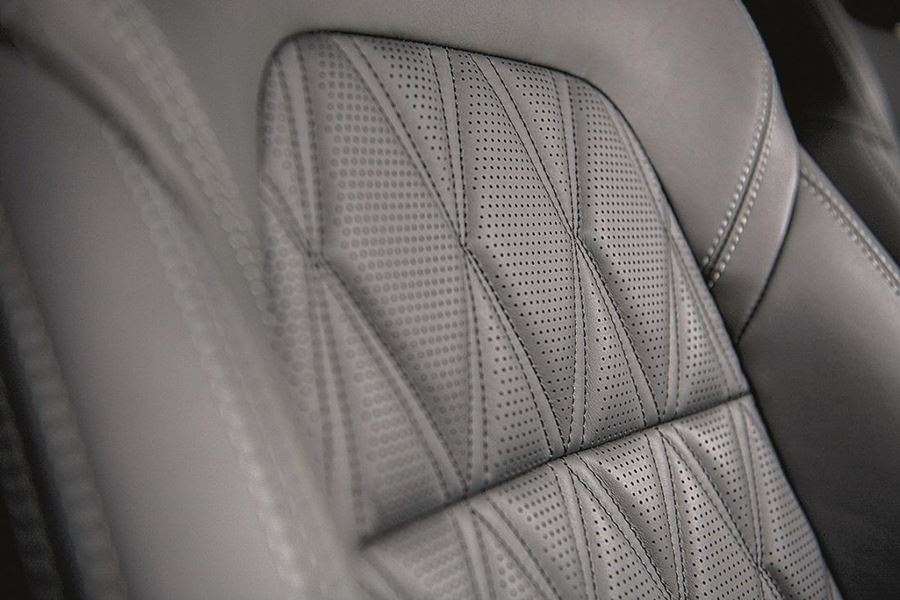
Nissan Qashqai, photo: Nissan
The hybrid system carries 22 pounds of weight. An interesting hybrid version of the e-Power unusual operating principle has also been announced, in which the 1.5 turbo petrol engine has a secondary function in relation to the electric motor. The total power output is 190 hp, but the story is somewhat reversed compared to classic hybrids. The petrol is basically not used for propulsion, but primarily for charging a powerful battery and transmitting power to an electric motor that drives the wheels itself, so the ride is very reminiscent of driving an electric car.
The Qashqai also gets a single-pedal e-Pedal braking and acceleration system, known from the electric Leaf. With the new platform, the basis of a more complete driving experience will be thorough refinements on more precise and flexible steering wheel operation, but also filigree polished suspension, which remains semi-rigid in the standard versions, while 4x4 and top models with standard 20-inch wheels go multilink.
And Ford is becoming an electric brand: It will cooperate with Volkswagen
The acceleration has begun and from now on we will hear almost daily news about which car brand is becoming fully electric in the period ahead. After Mercedes, Jaguar Land Rover, Bentley and many others, Ford has now stated that from 2030 it will offer exclusively electric models in Europe, as well as that the first European Ford on electricity will be made on the VW platform.
According to the promise from Ford, by the middle of 2026, every model on the European market will be available as a plug-in hybrid or electric, and by 2030, this company will switch exclusively to electricity.
Full electrification refers to passenger models, while commercial vehicles will have zero emissions by 2024.
All this fits in with the announcements from numerous European countries that they will ban the sale of gasoline and diesel engines by 2030, among which the United Kingdom is in the lead.
That is why Honda, Volvo, Nissan and others have announced that they will not even offer models with conventional drive in Europe. Honda will start implementing this plan as early as next year.
As for Ford, they are investing a billion dollars in the renovation of the factory in Cologne, where the production of the first European fully electric model will begin in 2023.
It will use Volkswagen's MEB platform on which the ID.3 and ID.4 models are created, and the first EV model from Ford made in Europe will be produced in parallel with the Fiesta. More information will be revealed in the coming period.
These five driving errors are ruined by the manual transmission! (VIDEO)
These five basic mistakes are often repeated by less experienced drivers, and each of them significantly increases the wear of all parts of the manual transmission…
It is well known that students in driving schools gain too little knowledge about car mechanics, as well as about the wrong driving style that harms the car. Driving according to the regulations is not all that is needed to keep the car in good condition. That is why older and more experienced drivers often point out to young people errors that do not affect driving safety, but greatly reduce the durability of the car's mechanical components.
The vast majority of them come down to improper handling of the manual transmission. Unlike an automatic, a manual transmission offers better control of the vehicle, but at the same time requires more attention when using it. Every experienced mechanic knows very well that clutch wear can be increased several times by careless driving.
1. Rest your right hand on the shift lever
2. Hold the clutch pedal depressed while waiting
3. Keeping the car uphill using the clutch, instead of the parking brake
4. Abrupt acceleration in high gear
5. Rest the left foot on the clutch pedal, instead of on the foot rest
{vembed Y=_cbZlhduYJY}
2021 Audi A4 Review: Premium Vibes, Premium Price
The verdict: Audi strikes a beautiful balance of sporty, luxurious and high-tech in the revised A4, delivering a satisfying compact sedan experience.
Verus the competition: It’s not as athletic as competitors like the Alfa Romeo Giulia or BMW 3 Series, but the new A4 makes up in comfort what it lacks in edginess. It’s easily as quick as most of its competitors, offers similar technology and provides a luxury experience that outshines rivals from Acura, Infiniti and Lexus.
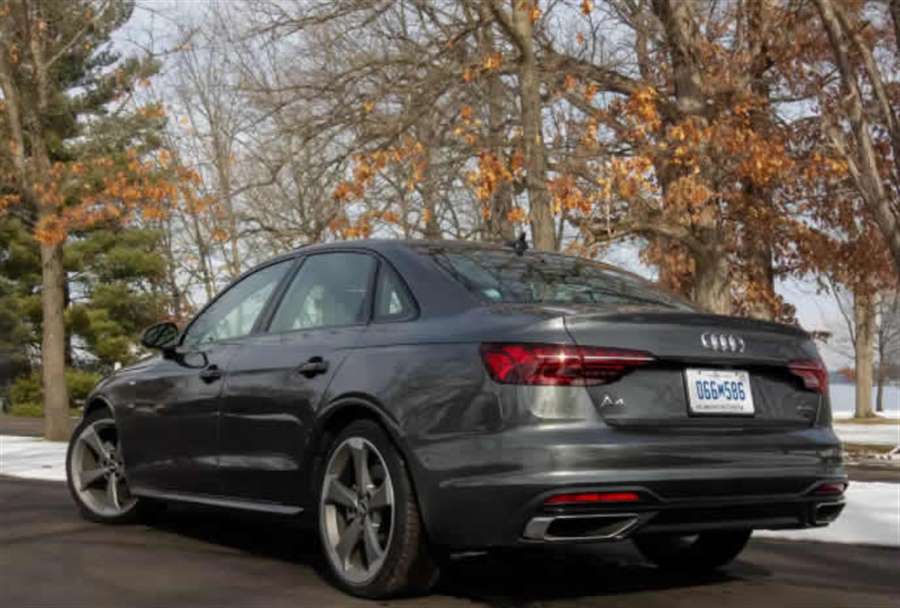
There’s been a seemingly never-ending parade of new SUVs showing up in our testing queue lately. Everyone has a new ute to sell to an increasingly ravenous customer base that loves high-riding, family-friendly, cargo-hauling boxes — so when something comes along that’s the antithesis of that mindset, it’s deliciously refreshing. That’s what we have here with Audi’s latest A4. It got a decent refresh of its styling and content for the 2020 model year, and the 2021 model got even more tweaks and refinements. German luxury specialist Audi has delivered a beautifully balanced and fun-to-drive — but not overly sporty — compact sports sedan that reminds you just how much more satisfying a low-slung sports sedan is than even the most hairy-chested, overpowered SUV out there.
More, Greener Power
The news for the 2021 A4 primarily centers on a power upgrade. The car still offers two turbocharged 2.0-liter four-cylinder engines, but both now make more power and feature a standard 12-volt mild-hybrid system to boost efficiency. Both engines gain 13 horsepower, leaving the base A4 40 trim with 201 hp and the upgraded 45 trim with a healthier 261 hp. Torque remains unchanged at 236 pounds-feet in the base 40 model and 273 pounds-feet in the 45. Both engines mate only to a seven-speed dual-clutch automatic transmission, and all-wheel drive is newly standard for 2021. The manual transmission was discontinued a while ago, and now there are no more front-wheel-drive models, either.
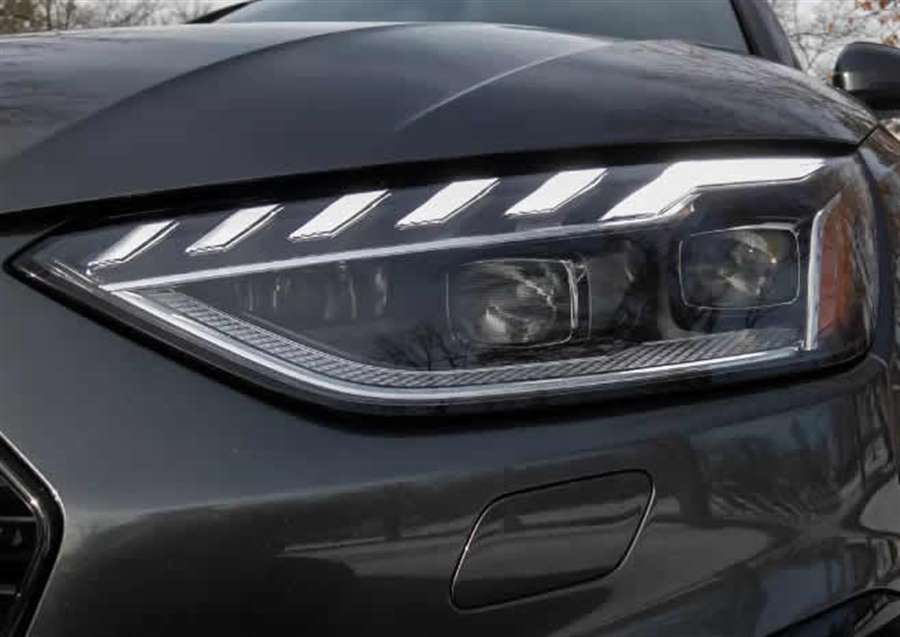
But you know what? I’m not even mad about it, because the A4 drives beautifully. The focus on balance is clearly apparent: The higher-spec engine I drove delivers ample, immediate thrust when called upon, and the automatic transmission is snappy and responsive. The car overall delivers a refined, poised driving experience that’s highly enjoyable. Its low seating position, tight handling and smooth yet communicative ride are all excellent reminders that, despite the usefulness of SUVs, they really aren’t made for enjoying the experience of driving.
This A4 is a bit too soft to be truly sporty; steering feel is direct but notably muted, and the suspension allows a bit more lean and bump-soaking cushiness than you’ll find in a comparable BMW or Alfa Romeo. Still, it’s no marshmallow, with the kind of higher-speed highway stability you expect from a German luxury brand. Overall, there’s just enough communication from the car’s mechanical components to be entertaining, and just enough isolation to keep things luxurious and refined.
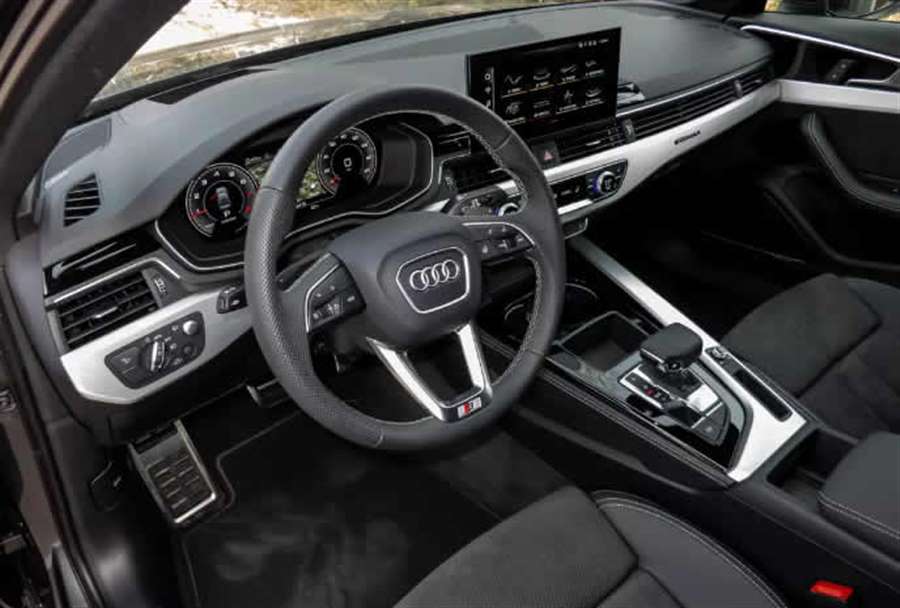
Fuel economy for the 45 S Line version of the A4 is basically unchanged from 2020 despite the addition of the mild-hybrid system. It’s rated by the EPA at 24/31/27 mpg city/highway/combined — 1 mpg less on the highway than the 2020 AWD A4. If you opt for the base 2021 A4 with the less powerful engine, that’s estimated to net you a slightly better 25/34/28 mpg, but either way, the addition of standard AWD means there’ll be no getting the fuel economy of the FWD 2020 model, which rang in at 27/35/30 mpg.
In a week of mixed-use driving, I averaged 26.5 mpg — pretty good given the spirited manner in which I often found myself driving the A4. By comparison, the higher-powered A4’s rating is mid-pack among AWD compact luxury sedans: The new 2021 Acura TLX A-Spec is rated an inferior 21/29/24 mpg, the 2021 BMW 330i xDrive a superior 25/34/28 mpg and the new 2021 Genesis G70 2.0T AWD a considerably worse 20/27/23 mpg.
Still a Benchmark Interior — for Now
We’re worried about Audi’s trend toward replacing every switch in the cabin with touch-sensitive panels — something American automakers tried a few years ago that didn’t go over well. The panels take away tactile feel for buttons, making for a more distracting experience — especially given that, in many cases, the touch panels don’t operate perfectly, requiring you to focus extra attention on them to make sure the function you tried to select has actually been selected. I’m happy to say the latest update to the A4 hasn’t created a completely “glass cockpit” just yet; there are still dedicated climate-control buttons and knobs, for instance, unlike on some larger Audis, such as the A6 and A8.
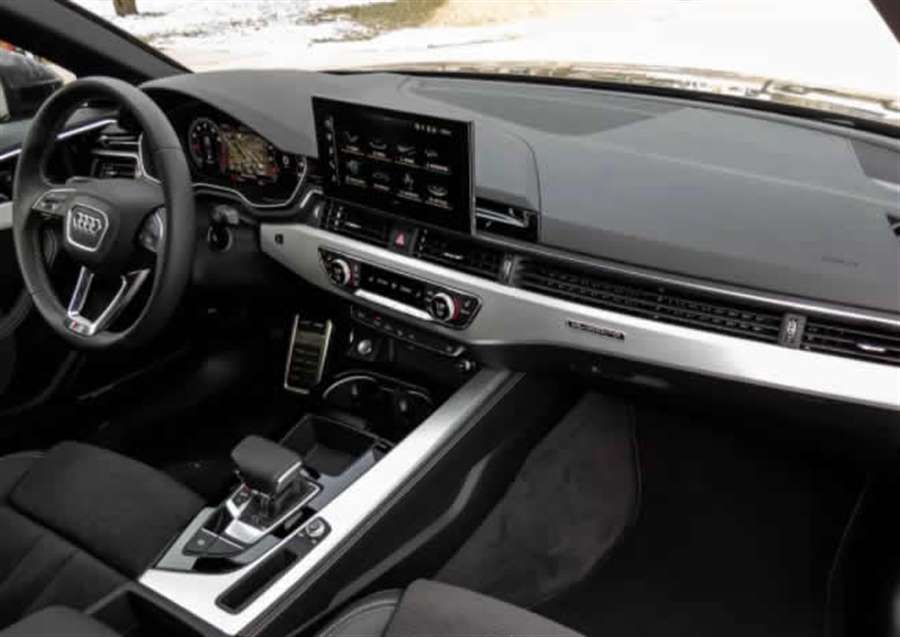
The front and center touchscreen was updated for the 2020 model year, and as in many cars these days, it’s been artlessly pasted onto the dashboard like an afterthought — or a tablet in a dock. Thankfully, unlike the latest Mercedes-Benz products, the steering wheel does not employ touch-sensitive areas — something I never thought I’d need to say.
The overall interior experience in the A4 is as it ever was: chock full of top-quality materials, excellent design, comfortable seats and great visibility. It does feature a very low driving position, which takes some getting used to in an era when what’s left of the sedans out there feature ever more upright, high-sitting driving positions. Front-seat comfort is good, but backseat space is rather tight in terms of leg and headroom, as is common in the compact sedan class.
As in other high-end luxury cars, you can adjust the interior ambient lighting from a calm, subtle glow all the way up to full-blast, “Tron”-style Lightcycle, depending on your taste and tolerance for such things. The digital gauge cluster is one of Audi’s better electronic features; the brand was one of the first to employ such technology across its range, and while it’s become a lot more common in competitors, Audi still makes sure it’s is one of the best out there with easy-to-read displays, an easy switch between display modes and an acceptable level of customization without information overload.
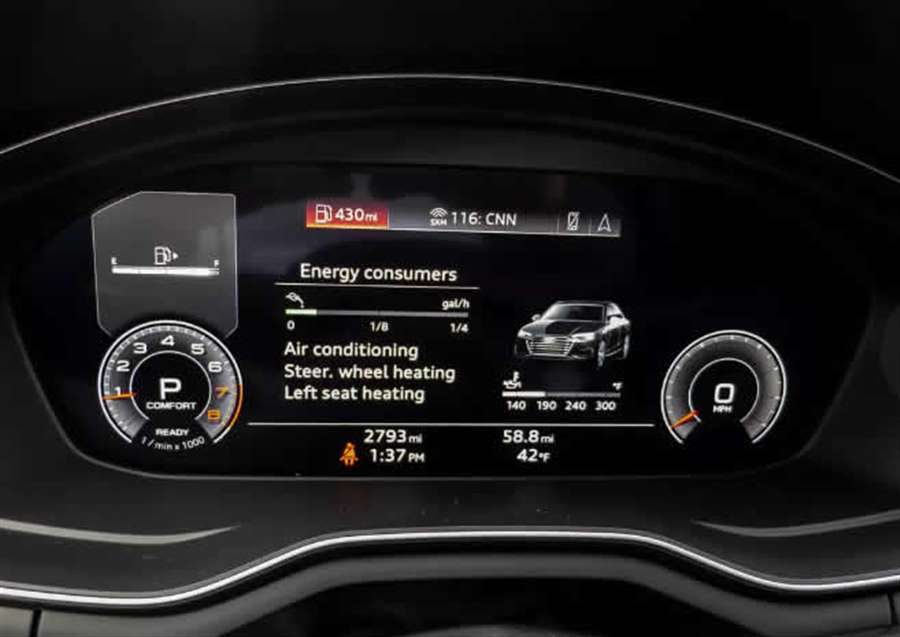
Cargo room isn’t the most important thing in a compact luxury sedan, but the A4 does all right here, too, with a 12-cubic-foot trunk, according to Audi. That’s more than the Genesis G70’s 10.5 cubic feet but less than the Acura TLX’s 13.5 cubic feet — and a lot less than the BMW 330i xDrive’s 17.0 cubic feet, though I suspect that figure may be a product of some sketchy measuring on BMW’s part. (This is why Cars.com has launched its own cargo-measuring effort, though we have yet to flesh out the A4’s class).
Premium Digs at a Premium Price
The latest Audi A4 is the typical premium Audi experience. My test vehicle was an S Line version, which brings a lot of the exterior styling elements of the S4 performance sedan into the A4 line, with a few spiffs on the inside, as well. As is typical with a German luxury sedan, though, you can always have more upgrades if you’d like to spend a little more money.
My test car also featured the S Line interior package, which brought leather and Alcantara seats, aluminum inlay trim and stainless-steel pedals. It also had a Black Optic Package for the exterior, which adds 18-inch black wheels, black exterior trim and all-season tires (or, as in the case of my test car, 19-inch wheels running summer tires thanks to a further Black Optic wheel upgrade). The grand total for my highly optioned A4 came to $53,840 (including destination). That’s a hefty sum for a compact luxury sedan, but it’s by no means out of line with what competitors charge for their offerings.
In the end, Audi’s mild updates for 2021 continue the A4’s long-standing tradition of style, technology and comfort, offered up at a competitive price. We can only hope the next generation doesn’t go to a complete “glass cockpit” look that eliminates hard buttons in favor of touch panels — but I’m not really all that hopeful. If anything, that impending possibility makes this model look more appealing than ever.
From 2025, the Jaguar becomes a fully electric car
The famous luxury car Jaguar will become 100% electric from 2025, announced the British manufacturer Jaguar Land Rover, which presented its new "green" strategy.
The company, which belongs to India’s Tata Motors, has expressed a desire to introduce some innovations under the leadership of a new CEO, Frenchman Thierry Bollore.
The British company has promised to invest 2.5 billion pounds (2.8 billion euros) annually, mainly for electricity.
"By the middle of the decade, Jaguar will experience a renaissance so that we have a purely electric luxury brand," the company stated.
Porsche will not produce cars in China. The “Made in Germany” label still stands
In the recent past, production in China has been associated with a symptom of economy and poor quality. Now it is more and more a manifestation of common sense for producers. For many companies, China is the largest market and the main source of income. However, the director of Porsche believes that it is for this reason that the production of cars of his brand should not leave Germany.
We used to see “Made in China” labels on plastic toys and clothes. Over time, it began to appear on electronics and other, increasingly complex everyday objects. Finally, the inevitable came: cars made in China appeared.
They drive mostly on Chinese roads all the time, but some of them are already coming to Europe. The MG brand is doing well in the once native British market (today it has four factories, all in China). Four years ago, the first Volvo S90 produced in Daqing arrived in Bosnia and Herzegovina, today the only place to produce this model.
With the development of electromobility, there will be more and more such cases. There are already more and more of them. Part of the production of the Tesla Model 3 goes to Europe from the new Giga factory near Shanghai. The new electric BMW iX3 is also coming from China. It is in Tiexi, not Munich, that BMW currently has its largest factory and development center.

BMW is no exception among German premium brands. Last year, Daimler CEO Ola Kallenius announced the freezing of Mercedes factories in Germany and focused on investing in other parts of the world, mainly China. In 2020, the group sold half of its Smart shares to China's Geely, under which microcar production was transferred from France to Hangzhou Bay.
Why doesn't Porsche want factories in China?
German carmakers have a bitter-sweet relationship with China. Even if they don’t want to, they are very addicted to it. The coronavirus pandemic only strengthened this dependence as the Chinese market began to recover faster than the rest of the world.
This has led to the situation that in 2020, every third car from German manufacturers was sold in this largest car market in the world. In the case of Volkswagen, that was as much as 40 percent of total production. Such dependence on one country is dangerous, but on the other hand, even in Germany itself there are comments that Chinese demand has saved the German economy in recent months.
In addition to this economic climate, some car manufacturers are still not thinking about manufacturing in China. One of them is a Porsche. "It makes no sense for us today to move production from Europe to China," said Oliver Blume, the company's director, in an interview with the Financial Times in February 2021.
On the one hand, this statement may seem contradictory. The data clearly show that such a move makes sense, because the largest number of cars of this brand is sold in China. Just ten years ago, Porsche boasted an annual production of 100,000 cars, while last year almost 90,000 cars of this brand were sold in China alone.
Demand was even higher, but the German company could not cope with it due to difficulties in transporting raw materials due to the imposed sanitary restrictions. The key was that it was a transport from China, which is also a world giant in the production of steel or lithium-ion batteries, the basic components of electric cars.
Porsche has combined many times with production in China. Similar rumors were denied in 2011 by the then head of the company, Matthias Muller. Blume has made similar statements before. There is reason to stick to your decision. Chinese buyers love Porsche due to the fact that it was developed and made in Germany, he revealed at one of the press conferences of this brand in 2019 in Shanghai.
This sentence is key to understanding not only Porsche’s situation, but the entire luxury goods market as well. This is seen in the Chinese passion not only for German cars, but also for French Louis Vuitton bags or Italian Gucci clothing. The value of these goods is largely generated by the country of origin indicated on the label. None of these brands come from China.
That is why Porsche continues to invest in factories in Germany. Recently, 6 billion euros were spent on adapting the central plant in Zuffenhausen to the production of the electric Taycan.
However, there is one Porsche model that can be produced outside of Germany that has little to do with the brand’s tradition - the Cayenne SUV. It is produced in Slovakia, on the same production line with Lamborghini Urus and Bentley Bentayga. It is interesting that these two models are being moved from Bratislava to Italy, ie to the United Kingdom, in the key phase of assembly, only for the final assembly to be done in a more prestigious place of origin.
Tested: 2020 Honda Civic Type R Refines a Great Hot Hatch
Honda makes the bonkers Civic even better by adding features, retuning the chassis, and tweaking the hatchback's still polarizing styling.
Everyone is seeking a distraction these days. The crumbs collecting in the seat of our racing simulator and the growing pile of empty cans beside it suggest that we've spent an unhealthy number of hours lapping computerized cars around circuits in Forza Motorsport. Perhaps it's the fleeting pleasure those pixelated races provide that made our hands-on experience with the revised 2020 Civic Type R feel like Honda gave us a healthier way to seek catharsis.

In southeast Michigan, our favorite paved playground, the loop we employ to select our 10Best list every year, lives close by. The drive there includes enough highway time to allow plenty of peepers to gawk at the Type R's gloriously juvenile bodywork. Its bulging front fenders, countless aero bits, and distracting (yet functional) wing are made more obvious by the Type R's new brilliant Boost Blue hue, which is the least subtle update Honda introduced on the 2020 Type R. (We expect an all-new Civic Type R for the 2022 model year). Other exterior revisions include body-colored trim on both bumpers, a larger grille opening that improves engine cooling, and, to add back some lost downforce from the new grille, a reshaped front spoiler. While nothing will ever convince the haters that this Civic looks badass, it's hard to deny that the Japanese-designed Batmobile draws as much attention as significantly more expensive metal. Apart from some dealer-installed accessories, the no-cost paint colors are the only options. Our 2020 copy cost $37,990, which is only $735 more than it did last year.
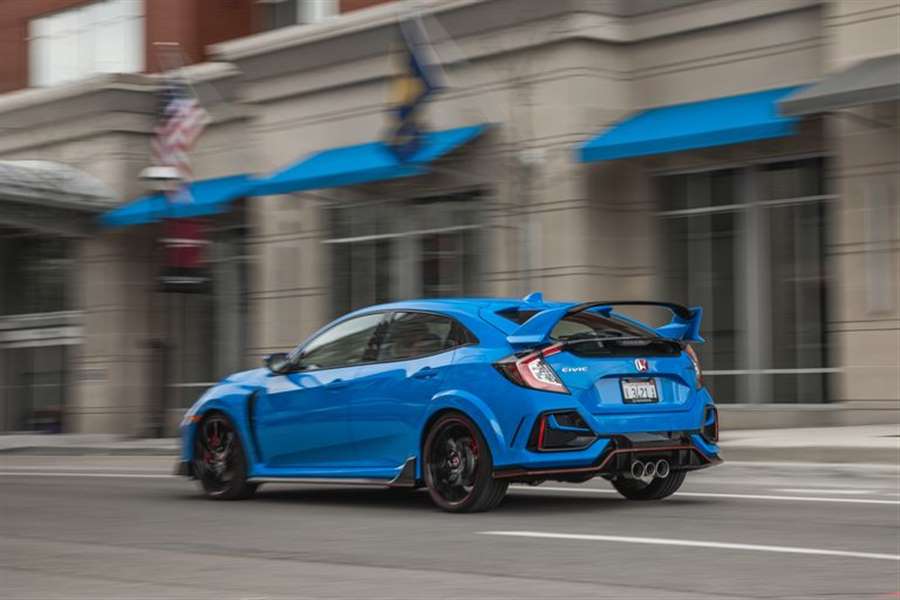
HIGHS: Unflappable poise, excellent turbo-four engine, daily driver livability.
The Type R looks as out of place on the interstate as Marilyn Manson performing at Sunday service. Although our long-term 2019 Civic Type R has revealed that extended road trips are not this car's strong suit, we had just a short interstate blast in the 2020 car before we reached our destination. Those outrageously red front seats are more comfortable than they look. And like lesser Civic hatches, the Type R has an Uber-grade back seat and sizable cargo space behind it. The 2020 model replaces the leather on the steering wheel and shift boot with a racier microsuede material. A new teardrop-shaped shifter hides a 90-gram counterweight to deliver better feel. Somewhat surprisingly, Honda kept the aluminum knob, which burns your hand in the summer and bites it in the winter.
The 2020 Type R's turbocharged 2.0-liter inline-four makes the same healthy 306 horsepower and 295 pound-feet of torque as before. That power is dispatched to the front wheels through a helical limited-slip differential and a six-speed manual transmission, which has short gearing that prioritizes rapid acceleration. While the engine starts making power around 2500 rpm, the party is pretty tame until the tach needle passes 3500 rpm, unleashing a thrilling blast to redline that conjures the high-revving VTECs of yore. It also provides enough shove to ensure that the Daewoo Lanos with a duct-taped wing that's lingering in your mirrors can only dream about overtaking you.
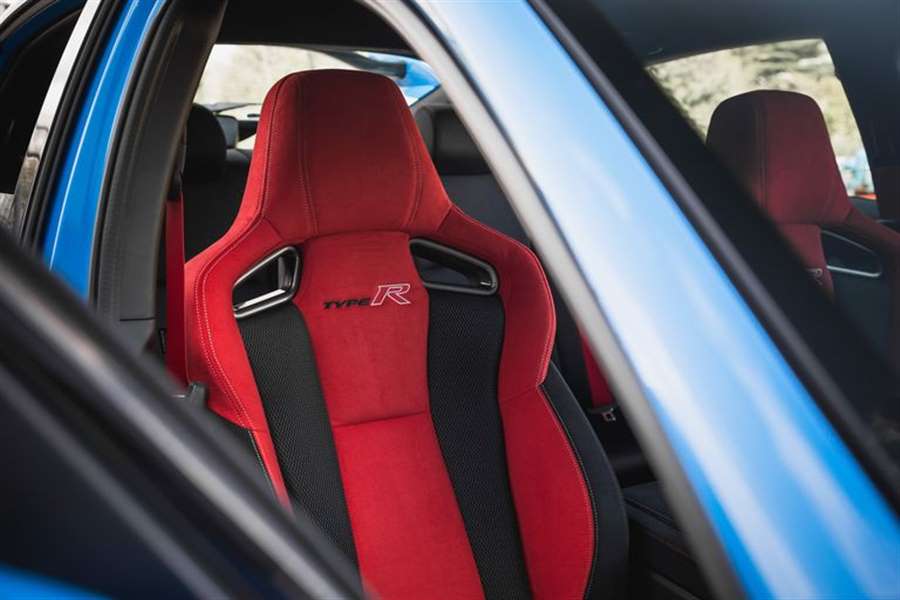
In the 2020 model, we recorded a 4.9-second dash to 60 mph and a quarter-mile pass of 13.4 seconds at 108 mph—solid runs that are both impressive for a front-wheel-drive car and similar to those of previous Type Rs we've tested. But the hottest Civic's reign as the quickest front-driver has come to an end. The updated 2021 Hyundai Veloster N with its new optional automatic transmission just beats the Honda to 60 mph by a tenth of a second. The 302-hp 2020 Mini John Cooper Works GP is a tenth quicker still to 60 mph (4.7 seconds) and posts an even stronger 13.1-second quarter-mile at 110 mph. Even more significant is that the Mini GP snagged the title of fastest front-driver ever at this year's Lightning Lap, beating the Type R's time around our 4.1-mile configuration at Virginia International Raceway by just 0.1 second.
LOWS: No longer the quickest hot hatch, love-it-or-hate-it styling persists, still doesn't sound as good as it drives.
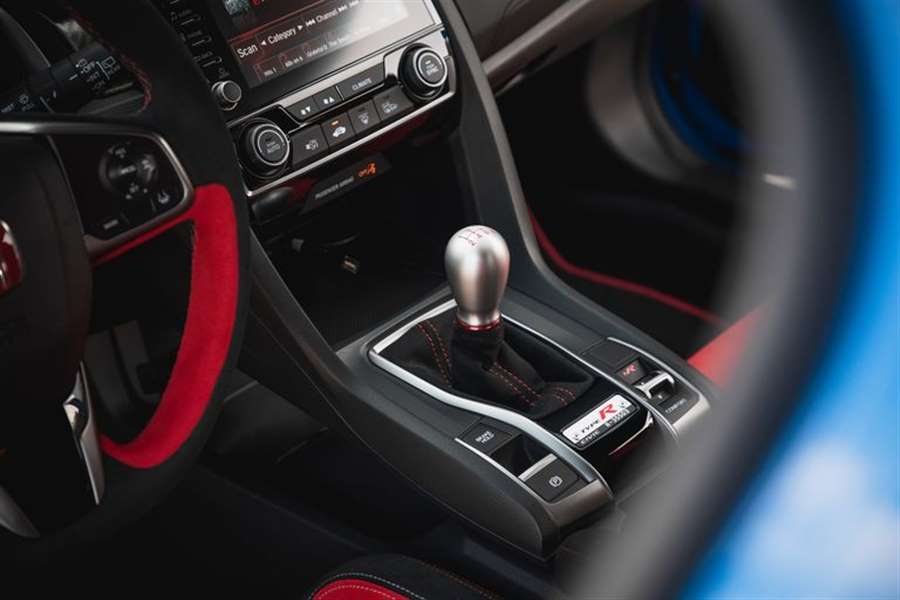
The Type R’s trademark triple-outlet exhaust issues a droning boom unless you’re working the engine hard enough to push exhaust through the center pipe and its resonator. The odd arrangement is intended to add character to the engine's soundtrack, but it only emphasizes our disappointment. The mightiest Civic sounds subdued, especially compared with the firecracker soundtrack of the Veloster N. Honda apparently realized this disparity and sought redemption by installing Active Sound Control on all 2020 models. This new feature artificially enhances the Type R's engine sounds using the audio system, and the intensity increases as you move through the drive modes. Too bad it's really only noticeable during large blips of the throttle—during heel-and-toe maneuvers or rev-matched downshifts—but even then, it just sounds like an auto-tuned bumblebee blasting from the speakers. The 88 decibels we recorded at full-throttle and 74 decibels at a 70-mph cruise are in line with other Type Rs we've measured, although those figures are 3 and 2 decibels quieter, respectively, than what our long termer produced when it was new.
As we approached the hard right turn that begins the clockwise circulation of the loop, we killed the climate system and the radio to focus on the Type R's chassis improvements. The 2020 car gets new lower-friction ball joints and updated bushings for the front suspension, revised rear bushings that are stiffer laterally, and retuned adaptive dampers that now sample the road 10 times quicker. The front brakes are fitted with more fade-resistant pads and new two-piece floating rotors that are no longer cross drilled that cut unsprung weight by 2.5 pounds per side. These careful tweaks are hard to perceive without driving the new and old models back-to-back, and they don't produce any measurable difference at the test track. The 2020 model returned a familiar (and excellent) 1.03 g of grip around the skidpad and a 148-foot stop from 70 mph. However, we did notice the new car's firmer brake pedal, which Honda says has 17 percent less initial lost motion before the pads meet the rotors (and the Type R already had spectacularly good brake feel).
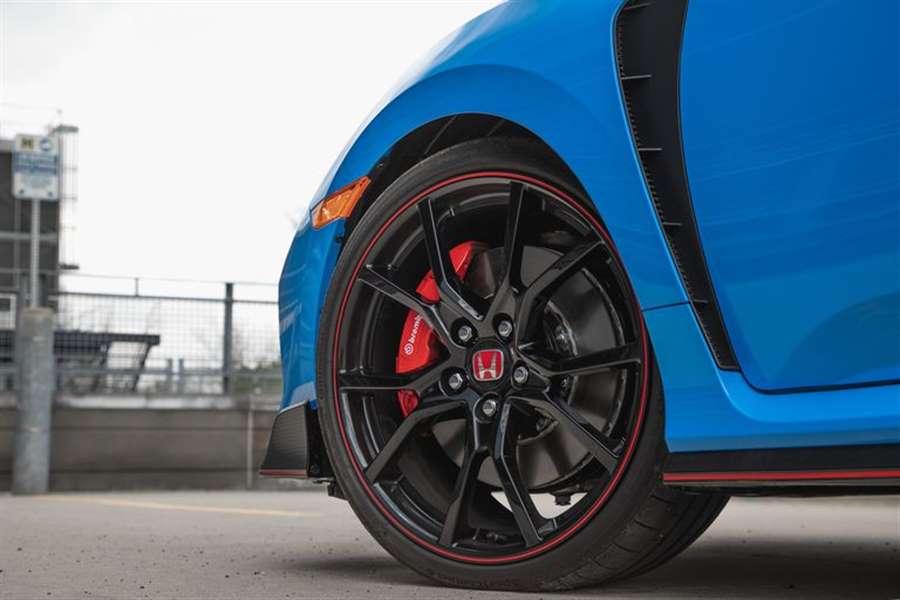
Our route includes several places where you can accelerate hard from a stop, and that’s one of the few situations where the Type R’s front-wheel-drive layout feels like a liability. The car's Continental SportContact 6 tires—sized 245/30ZR-20 all around—frantically scramble for traction as the turbo spools up and the tach approaches the 7000-rpm redline. While the front tires struggle to find grip right off the line, they’re at least not tugging toward the ditch, as the Type R's dual-axis strut front suspension magically vanquishes the dreaded front-drive torque steer. Once you’re moving, flowing along a ribbon of twisty road in third gear, the lack of all-wheel (or rear-wheel) drive feels irrelevant.
Despite pancake-thin sidewalls and huge 20-inch wheels, the Type R’s ride is almost unbelievably free from the expected jolts and jitters. While there's a noticeable change between the softest damper setting (Comfort) and the firmest (Plus R), the Civic feels unflappable in either mode while roller-coasting up and down the loop's esses. Steering effort incrementally increases with each of the three drive modes (the default, appropriately, is Sport) and every note reminds us of Porsche's divine composition.
The talkative wheel is a major factor in the Type R's preternatural ability to turn any road into a racetrack. This is a car that transforms grocery runs into hot laps, commuting into rally stages. While it shares an aging infotainment system and its standard driver-assistance features (such as adaptive cruise and lane-keeping assist, which are new for 2020) with the regular Honda Civic hatch, the alpha-dog model looks and feels like an altogether different car. It’s a raw, visceral machine, an IRL antidote to virtual living. You might have a million-dollar racing simulator, but those screens can’t compare with the view through a Type R’s windshield.

